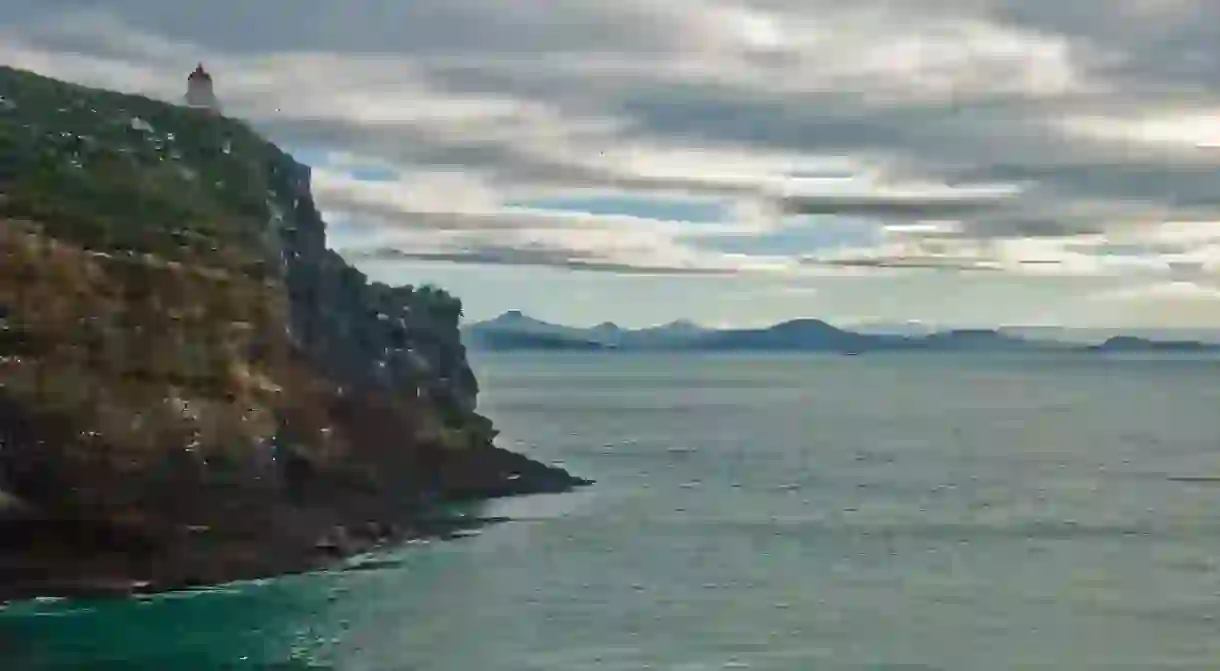Taiaroa Head: The World's Only Mainland Royal Albatross Colony

Venture into the windswept shores of New Zealand’s Otago Pensinsula to find the only mainland royal albatross colony in the entire Southern Hemisphere. Taiaroa Head, also known as Pukekura, lies just outside of the South Island city of Dunedin and is home to a number of native bird and marine wildlife species.
Taiaroa Head is named after Te Matenga Taiaroa, a 19th-century Māori chief who was part of Ngāi Tahu – the largest tribe (iwi) in the South Island. Its alternative name, Pukekura, hails from a historic pā (fortified settlement) site on the headland, which can be traced as far back as 1650.

The headland is home to more than 10,000 seabirds – some of which are seasonal residents, others are regular nocturnal dwellers, and a handful only come out when the wind gusts are in their favour. Needless to say, the timing of your visit will determine which species you’re most likely to stumble across.
Out of all the resident bird life, it’s Taiaroa Head’s royal albatrosses that everyone knows best. It’s interesting to note that, while the first albatross egg was laid in the headland in 1919, it wasn’t until the late 1930s when ‘amateur’ ornithologist Lance Richdale became committed to studying and preserving these majestic bird species that Taiaroa Head was transformed into a protected mainland colony.

These days there are some 200 royal albatrosses around Taiaroa Head, and the colony has seen more than 500 hatchings since its inception.
Each year, about half of the albatrosses make landfall to nest or to court a new mate. Because of their extensive, 11-month breeding period the birds have become a tourist attraction in their own right. So much so, the Otago Peninsula Trust operates guided tours of the observatory where you’ll find them flying about as well seeing them nesting. And if you can’t make it in time, you can always livestream the birds as they’re patiently waiting for their chicks to hatch.

Albatrosses are best viewed on windy days, when they’re known to spread their expansive wings to glide across the headland. The observatory, however, is still the ideal bird-watching spot on the headland. Not only is this the prime location for albatross nesting and courtship, it is also one of the main places where you’ll sight some native Stewart Island shags – the observatory is one of two places where these threatened species lay their nests.

Further out at Pilots Beach, on the western side of Taiaroa Head, you’ll find another year-round wildlife attraction: colonies of little penguins. They can only be viewed at dusk, as they return to their nests after spending some time scouring for food in the ocean. Over summer the Pukekura Trust hosts regular night-time viewing tours for those wanting to watch the little penguins coming home – this is actually the best time to catch a glimpse of these tiny critters, as the warmer season is known to bring about more than 200 birds to these shores.

Pilots Beach is also worth visiting if you’ve got a soft spot for New Zealand fur seals (also known as kekeno) and sea lions (rāpoka). On a warm day, you’ll typically see them basking in the sunlight – but remember not to get too close, as they’re quick to react when they feel like they’re being encroached upon. It is generally advised that large travelling groups should stay within a 10-metre (33-foot) distance from these colonies at all times.
There are many other creatures to admire in and around Pilots Beach. Rare yellow-eyed penguins (hoiho) are known to reside not too far from the little penguin colonies; if you get up to the ocean, you might also be see a few migratory Orca and humpback whales swimming past, as well as visiting dusky and Hector’s dolphins as they make their way over to the Antarctic.

On the eastern side of Taiaroa Head, you’ve got even more resident birds. Just adjacent to the car park you’ll find some spotted shags, royal spoonbills and red-billed gulls doing their rounds. A boardwalk will lead you to a viewing area where you can take a glimpse at these, among other oceanic birds, nesting on cliff ledges and flying offshore.
While you’re out and about, don’t forget to explore some of the headland’s historic ruins. Former coastal defences like the Armstrong Disappearing Gun Emplacement, for instance, are bound to pique the interest of visiting war history buffs. That one in particular was built in 1886 after a scare that New Zealand could be invaded by the Russians. Taiaroa’s historic lighthouse, which was originally built in 1864 and was once the oldest operating lighthouse in the South Island, can also be viewed from various places, but especially around the eastern parts of the headland.














